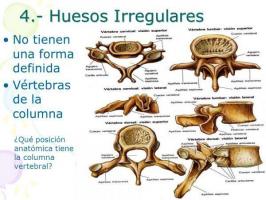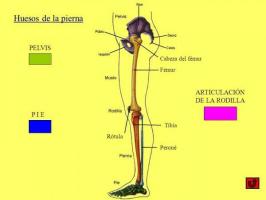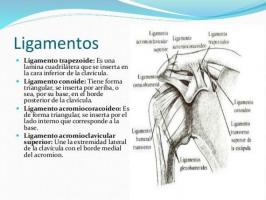Structure of the prokaryotic CELL

The cell is the fundamental structural and functional unit of all living things, but there are two fundamental types of cells, eukaryotic and prokaryotic cells. Among these two types, eukaryotic cells are the most complex and specialized, while prokaryotes are the simplest. In this article by a teacher we talk about the structure of the prokaryotic cell. If you want to find out more, join us in this new lesson!
Between living beings they differ three great domains of life:
- The Dominion Eukaria, that includes those organisms more evolved with eukaryotic cells
- Domains Eubacteria and Archeobacteria, which include organisms made up of prokaryotic cells and that differentiated early in evolution.
Prokaryotic organisms are single-celled and they are the evolutionarily oldest cells, whereas eukaryotes are normally multicellular.
Within prokaryotes, archaebacteria are more primitive bacteria that sometimes live in the most common habitats. extremes of the planet, such as thermoacidophiles that live in sulfur wells with temperatures of up to 80 degrees and Ph of up to 2. Eubacteria are what we know as true bacteria and the prototype of what a prokaryotic cell is.
The prokaryotic cell has a size between 1 and 10 μm, although the smallest can reach 0.1 μm. They are formed, from the outermost to the innermost, by a capsule (may be absent), a cell wall, a membrane plasma, the bacterial chromosome, some appendages (not all are always present) and some plasmid (not always Present). Among prokaryotic cells, archaebacteria differ slightly in structure from true bacteria, especially in the capsule and cell wall.
We are going to discover here what the prokaryotic cell structure, take note!
Capsule
The capsule is not present in all bacteria and is generally made up of organized polysaccharides (sugar polymers) secreted by the bacterial cell itself. The bacterial capsule fulfills some important functions for the life of bacteria, such as the protection of the bacteria or be an important virulence factor that allows the bacteria to bypass the host's immune system (i.e. antiphagocytic). The bacterial capsule is important for the virulence of bacteria that cause meningitis or pneumonia.
Cellular wall
The rigid cell wall is present in all bacteria and is located below the capsule (when it exists). The wall helps maintain the structure of the cell and protects it from osmotic pressures. It is made up of molecules called peptidoglycan, made up of sugar and polypeptide units, with some amino acids between them. The wall of archaea is slightly different from that of bacteria. Antibiotics like penicillins attack and destroy the wall formation.
Plasma membrane
It is located below the cell wall and delimits the interior of the prokaryotic cell. It is present in all bacteria and is very similar to the eukaryotic membrane, being also made up of lipids, proteins and carbohydrates on its external face. However, unlike eukaryotic membranes, they do not have sterols like cholesterol (except for a group of small bacteria). Archaebacteria have different bonds in the membrane, which allows them to withstand more extreme environments.
Appendices
Many prokaryotes have different projections or appendages on their plasma membrane. These appendages allow them to acquire different characteristics, such as adhesion to surfaces, movement or the transfer of DNA between them. Some of these appendices are:
- Fimbriae: they are thin and short protein filaments that come out of the membrane and serve bacteria to adhere to objects and their environment. Fimbriae are important in bacteria that cause infections of the reproductive system, as they allow them to adhere to the reproductive system.
- Pilis: they are somewhat longer filaments composed of the protein pilin. They are of different types and fulfill different functions. The most studied are the sexual pili, which allow the transfer of DNA between bacteria in a process called conjugation. Type IV pili help bacteria move through their environment.
- Flagella: they are the most common appendages in bacteria and are used for locomotion. They are made up of the flagellin protein and are tail-like structures that move like helices, propelling the bacteria.
Chromosomes and plasmids
When we speak of prokaryotic chromosomes, we mean a very different structure from the eukaryotic chromosome. It consists of a circular DNA molecule found in a region of the cell known as the nucleoid (which is nothing like the eukaryotic nucleus).
The bacterial chromosome contains the genes most important for the life of the bacterium. Some bacteria also contain additional circular DNA molecules called plasmids. These plasmids usually have genes that are not essential for the life of bacteria, such as antimicrobial resistance genes.
Now that we know the structure of the prokaryotic cell, we are going to leave you a typical example of a prokaryotic cell: that of Escherichia coli,a bacterium that inhabits the gut of warm-blooded mammals. Its cell has a diameter of 1 μm and 2 μm in length.
It has a chromosome that, when unrolled, would reach about 1,000 times the diameter of the bacteria and that houses between 4,000 and 5,000 genes.

Cooper, G. M., Hausman, R. E., & Wright, N. (2014). The cell (6th. ed .--.). Madrid: Marbán.



